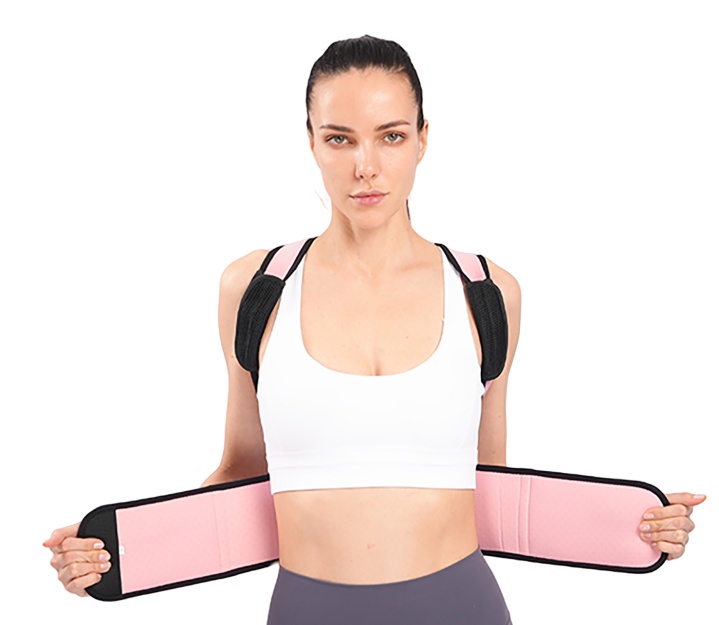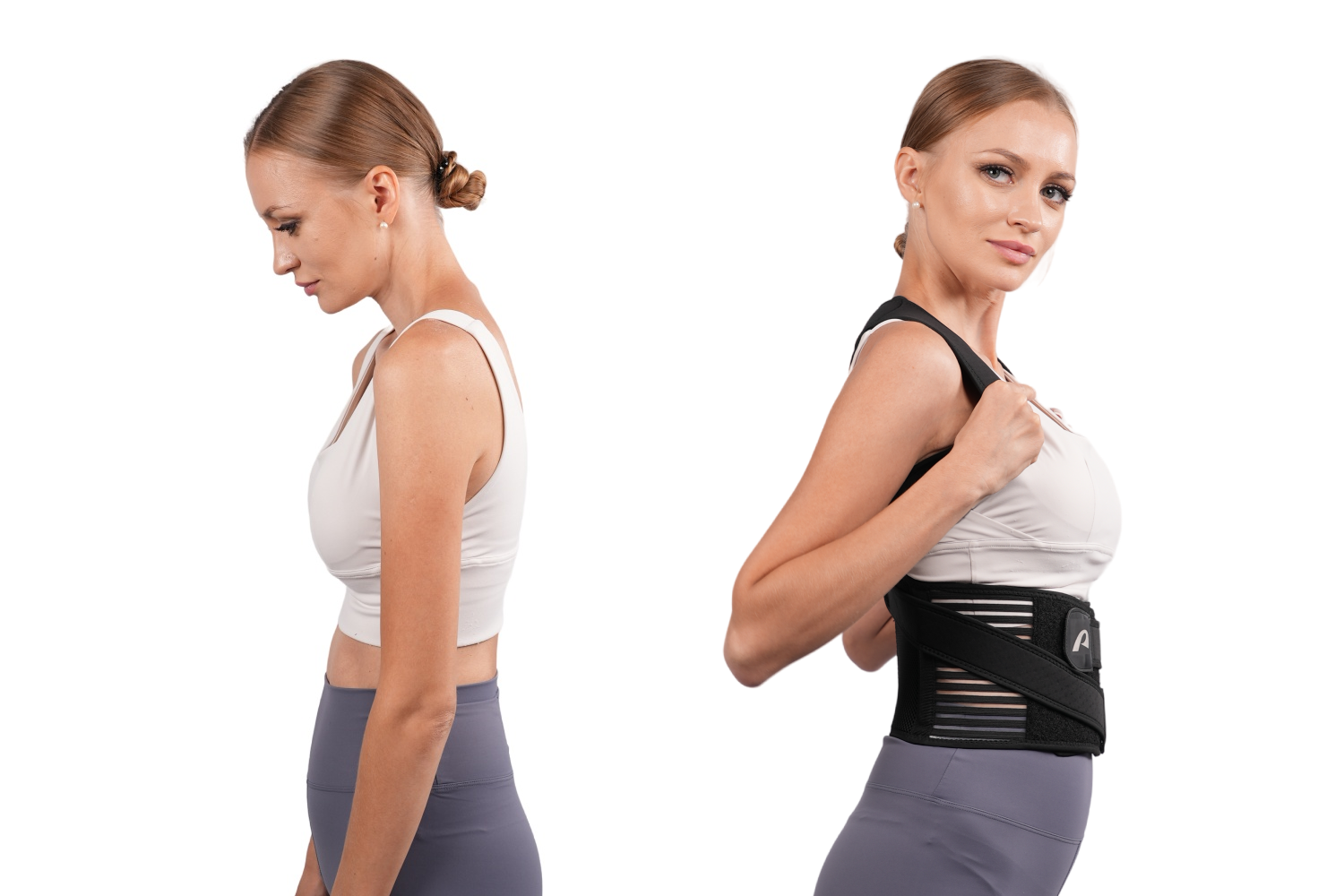Ever catch yourself slouching at your desk or hunching over your phone? You're not alone! Poor posture is a common issue that affects many of us, leading to discomfort and even chronic pain. Enter the posture corrector – a nifty device designed to help you maintain proper alignment and alleviate pain. In this guide, we'll dive into everything you need to know about posture correctors, from their benefits to tips on improving your posture naturally. Ready to stand tall and feel great? Let's get started!
Back Brace for Posture is a device designed to support your body in maintaining proper alignment. They come in various forms, from simple straps that pull your shoulders back to more complex braces that support your back and neck. These devices are often used to combat the effects of prolonged sitting and poor posture habits, which can lead to back, neck, and shoulder pain.

| Type | Description |
|---|---|
| Shoulder Straps | Lightweight and focus on pulling your shoulders back. |
| Back Braces | Provide support to your entire back and are typically more rigid. |
| Posture Shirts | Look like regular shirts but with built-in support structures. |
| Electronic Trainers | Use sensors to alert you when you're slouching via gentle vibration. |
Reduces Pain: Alleviates back, neck, and shoulder pain by promoting proper alignment.
Improves Posture: Helps you develop better posture habits, even when you're not wearing the device.
Enhances Confidence: Standing tall can boost your confidence and presence.
Prevents Future Problems: Reduces the risk of developing chronic pain or posture-related issues.

| Criteria | Details |
|---|---|
| Identify Your Needs | Determine which part of your body needs the most support. |
| Consider Comfort | Look for breathable materials and adjustable straps. |
| Check the Fit | Ensure the corrector fits well and doesn't cause discomfort. |
| Read Reviews | Look at user reviews to gauge the effectiveness and comfort of different models. |
While posture correctors can be incredibly helpful, it's also important to work on improving your posture naturally. Here are some tips to help you get started:
Exercise Regularly: Strengthening your core and back muscles can support better posture.
Stay Active: Avoid sitting for long periods; take breaks to move around.
Adjust Your Workspace: Ensure your desk and chair are set up to promote good posture.
Be Mindful: Pay attention to your posture throughout the day and make adjustments as needed.
Integrating specific exercises into your routine can significantly enhance the benefits of a posture corrector. Here are some exercises to try:
| Exercise | How to Do It | Benefits |
|---|---|---|
| Chin Tucks | Sit or stand up straight. Slowly tuck your chin towards your chest, holding for a few seconds before returning to the starting position. | Strengthens the neck muscles and aligns the head over the spine. |
| Shoulder Blade Squeezes | Sit or stand up straight with your arms by your sides. Squeeze your shoulder blades together and hold for a few seconds. | Strengthens the muscles between your shoulder blades, promoting better upper back posture. |
| Cat-Cow Stretch | Start on all fours. Arch your back (Cow) and then round it (Cat), moving between these positions slowly. | Improves flexibility in the spine and strengthens the back muscles. |
| Plank | Get into a push-up position but rest on your forearms. Hold your body in a straight line from head to heels. | Strengthens the core, back, and shoulders, which are crucial for maintaining good posture. |
Hearing from those who have successfully used posture correctors can be incredibly motivating. Here are a few testimonials:
Jane, 34: "I used to suffer from constant neck pain due to hours spent at my desk. The posture corrector I bought has been a game-changer. Not only has my pain decreased, but my colleagues have also noticed my improved posture."
Mike, 45: "As a truck driver, my back was always aching. After using a back brace posture corrector, I've seen significant improvement. It's comfortable enough to wear while driving, and my back pain has reduced considerably."
| Myth | Reality |
|---|---|
| Posture Correctors Are Only for the Elderly | People of all ages can benefit from posture correctors. They're particularly useful for individuals who spend long hours sitting or have developed poor posture habits. |
| Wearing a Posture Corrector Weakens Muscles | When used correctly, posture correctors support muscle engagement rather than weakening them. They remind you to maintain good posture, which helps strengthen the necessary muscles over time. |
| You Need to Wear a Posture Corrector All Day | It's not necessary to wear a posture corrector all day. Starting with short periods and gradually increasing usage can be more effective and comfortable. |
Creating an environment that promotes good posture can make a significant difference. Here are some tips:
Ergonomic Furniture: Invest in a good chair and desk that support proper alignment.
Monitor Height: Ensure your computer monitor is at eye level to prevent neck strain.
Keyboard and Mouse Position: Keep them at a comfortable height to avoid hunching.
Foot Support: Use a footrest if your feet don't touch the ground when sitting.
Use a Lumbar Pillow: Provides lower back support and encourages proper spinal alignment.
Practice Deep Breathing: Helps relax your muscles and maintain a neutral spine position.
Stay Hydrated: Good hydration keeps your spinal discs healthy.
Sleep on a Supportive Mattress: Ensures your spine stays aligned while you sleep.
Modern technology has introduced innovative solutions for posture correction. Here are some tech-based tools you might find useful:
| Tool | Description |
|---|---|
| Posture Tracking Apps | Use your smartphone to monitor and remind you to maintain good posture. |
| Wearable Devices | Small gadgets that attach to your clothing and vibrate when you slouch. |
| Smart Desks | Adjustable desks that allow you to switch between sitting and standing positions easily. |
With more people working from home, maintaining good posture has become even more challenging. Here are some specific tips for remote workers:
Create a Dedicated Workspace: Set up a specific area for work to avoid slouching on the couch or bed.
Invest in Ergonomic Furniture: A good chair and desk can make a huge difference.
Take Regular Breaks: Stand up, stretch, and move around every hour to avoid prolonged sitting.
Use a Laptop Stand: Elevate your laptop to eye level and use an external keyboard and mouse.
Transitioning into using a posture corrector requires patience and consistency. Here’s a step-by-step guide:
Start Slowly: Wear the corrector for 15-30 minutes a day initially.
Gradually Increase Time: Add 10-15 minutes each week as your body adapts.
Combine with Exercises: Complement wearing the corrector with the exercises mentioned earlier.
Listen to Your Body: If you feel discomfort or pain, reduce the wear time and consult a professional.
Adopting good posture habits can lead to numerous long-term benefits:
Enhanced Physical Health: Reduces the risk of musculoskeletal problems and chronic pain.
Improved Breathing: Proper posture allows for better lung expansion and breathing efficiency.
Boosted Energy Levels: Less strain on muscles and joints can lead to increased energy.
Better Digestion: Proper alignment can improve digestion by avoiding compression of abdominal organs.
Incorporating a posture corrector into your daily routine can be a game-changer for your alignment and overall health. By choosing the right device and combining it with natural posture improvement techniques and exercises, you'll be well on your way to standing tall and feeling great. Remember, consistency is key, and small changes can lead to significant improvements over time. Embrace the journey to better posture and enjoy the benefits it brings to your well-being and confidence.